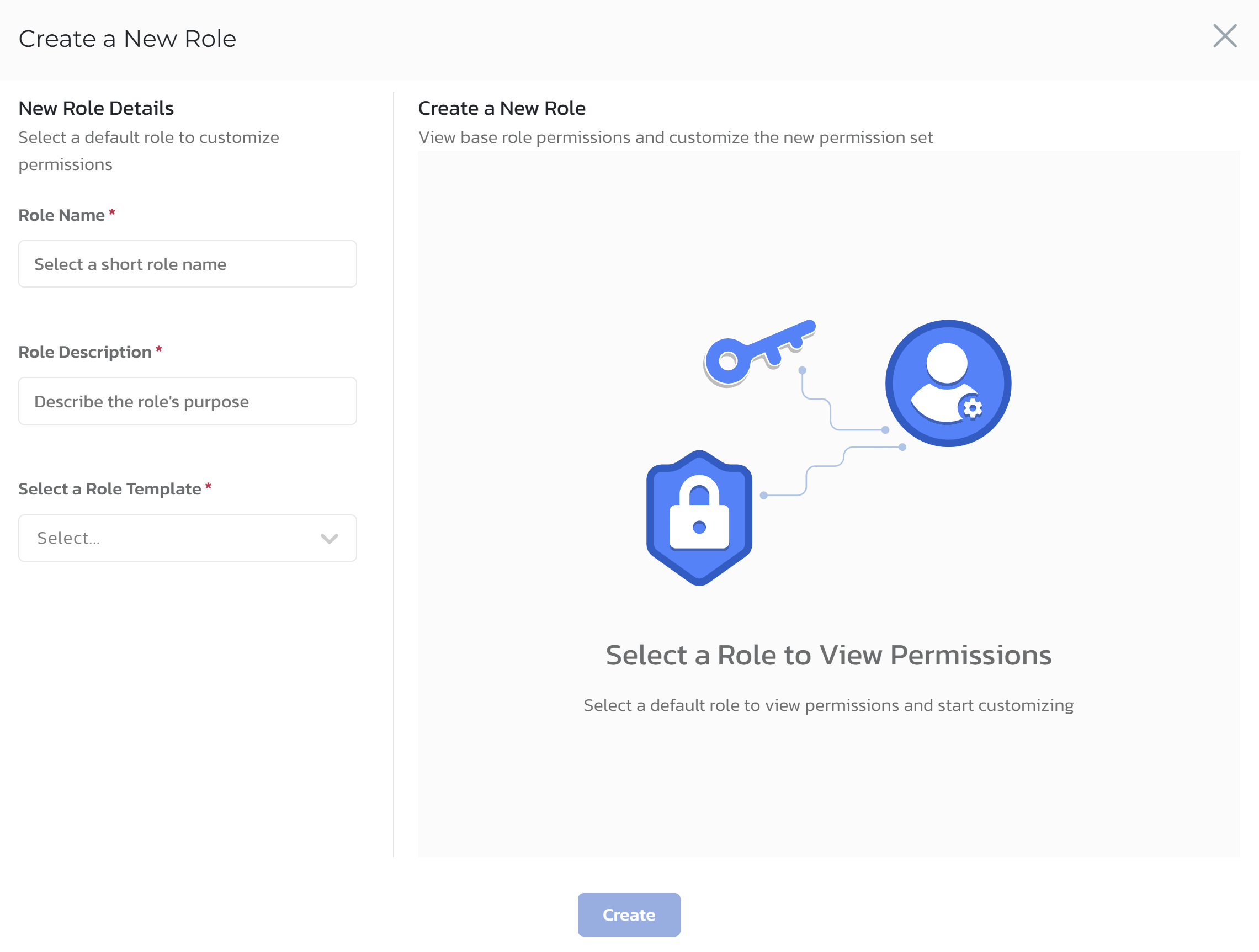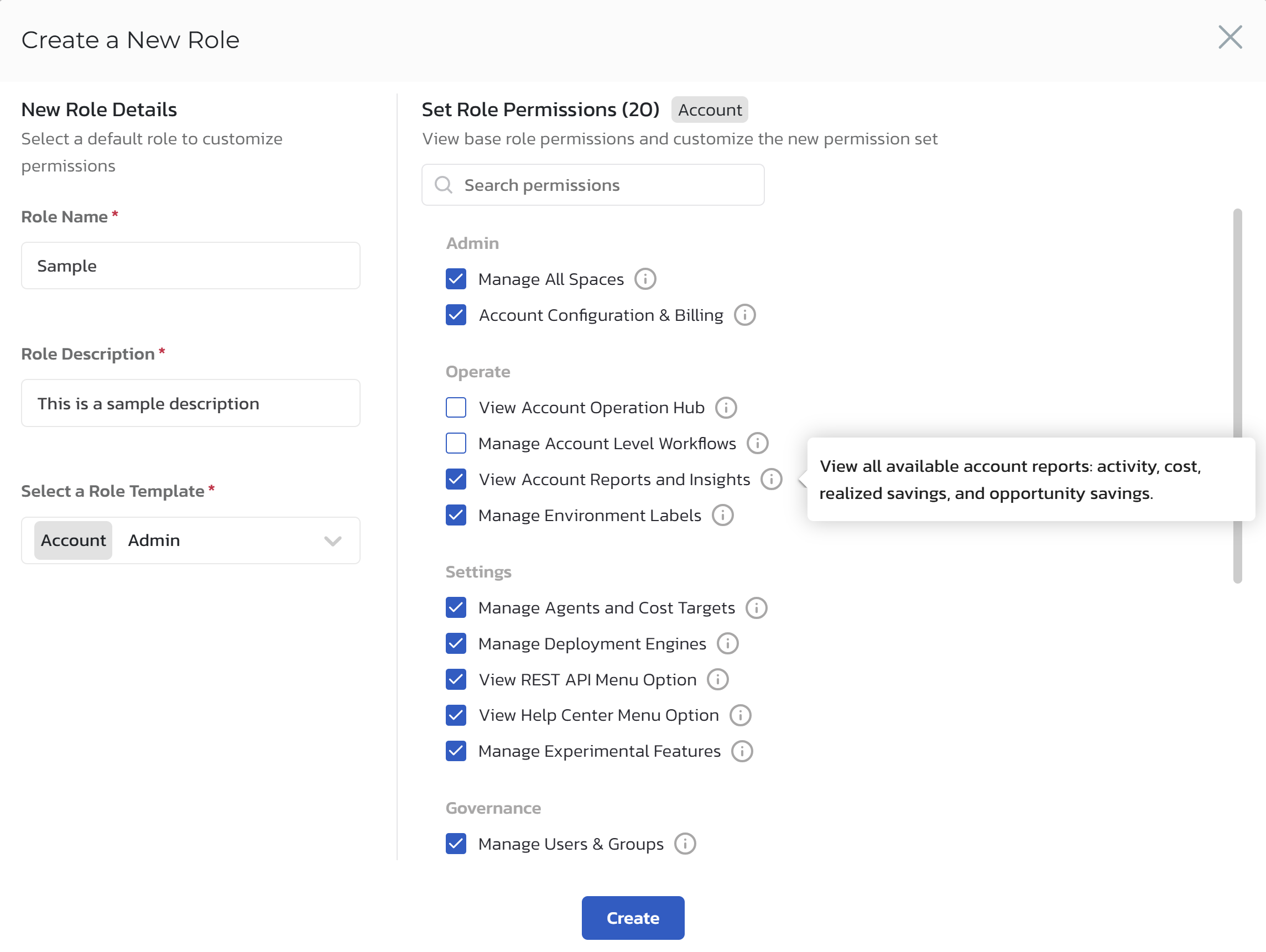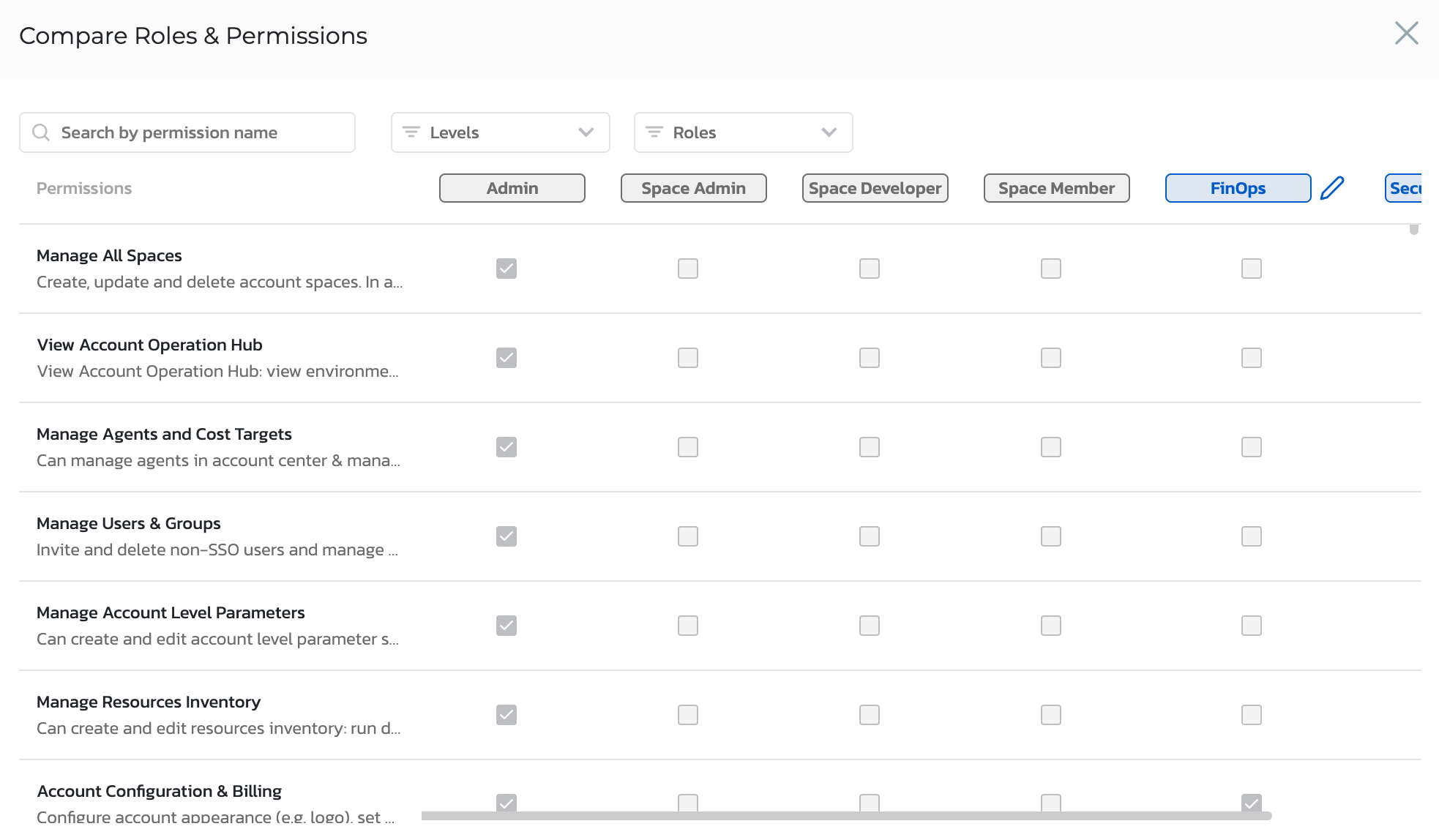Custom Roles
Custom roles allow you to define your own roles for specific usage in your organization (for example, a FinOps role, security auditor, or a limited-access operator). Once defined, custom roles can be associated with users and/or groups, providing fine-grained control over permissions.
Defining a New Role
When defining a new custom role, you will need to provide the following details:
- Name: The name of the custom role (e.g., "FinOps Analyst").
- Description: A short description of the role's purpose.
- Role Template: Decide whether the new role will be an account-level or space-level role, and select an existing role as a base template for the new role's permissions.
After selecting a template, you can customize the set of permissions for the new role. Custom roles can be edited at any time if permissions need to be modified.
Comparing Role Permissions
In the main Roles screen, you can also compare role permissions to identify differences between roles.
Use Case Examples
Example 1: FinOps Role
A FinOps role can be created to allow users to view cost dashboards and reports, but not to launch or terminate environments.
- Name: FinOps Analyst
- Description: Can view cost data and reports, but cannot modify environments.
- Permissions: View cost dashboard, view reports, view environments (read-only).
Example 2: Security Auditor
A Security Auditor role can be created to allow users to view environment configurations and audit logs, but not to make any changes.
- Name: Security Auditor
- Description: Can view all environment configurations and audit logs.
- Permissions: View environments, view audit logs, view blueprints (read-only).
Example 3: Limited Operator
A Limited Operator role can be created to allow users to launch and terminate environments, but not to modify blueprints or manage users.
- Name: Limited Operator
- Description: Can launch and terminate environments only.
- Permissions: Launch environments, terminate environments.
Managing Custom Roles
- Custom roles can be assigned to individual users or to groups.
- You can edit custom roles at any time to update their permissions.
- Use the role comparison feature to review and compare permissions between roles for governance and compliance.
For more information on managing users, groups, and permissions, see the Roles and Permissions page.



